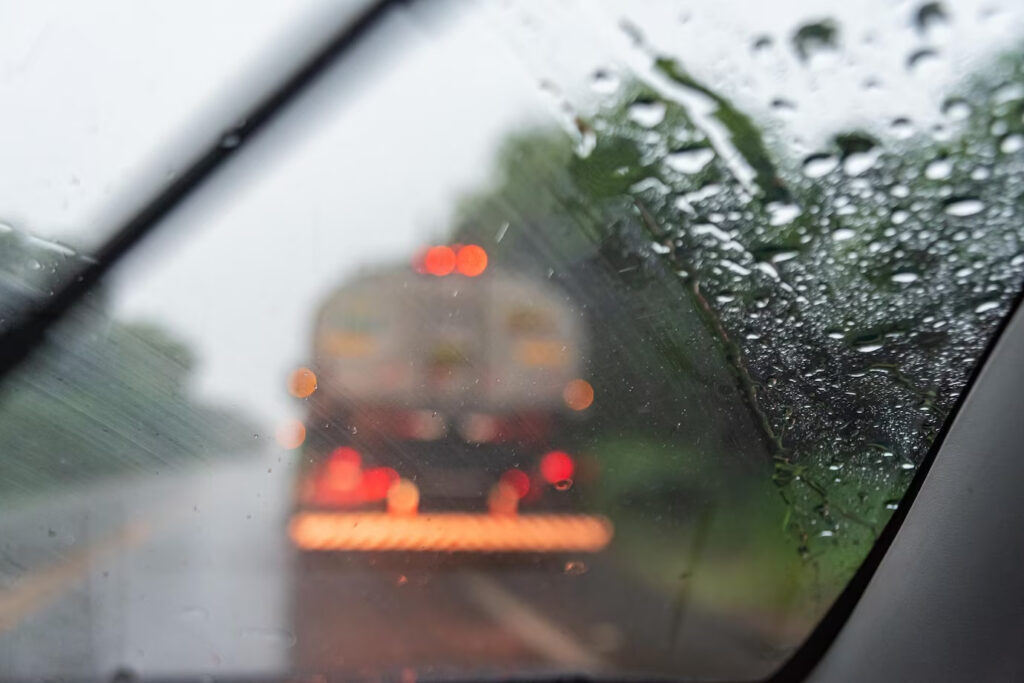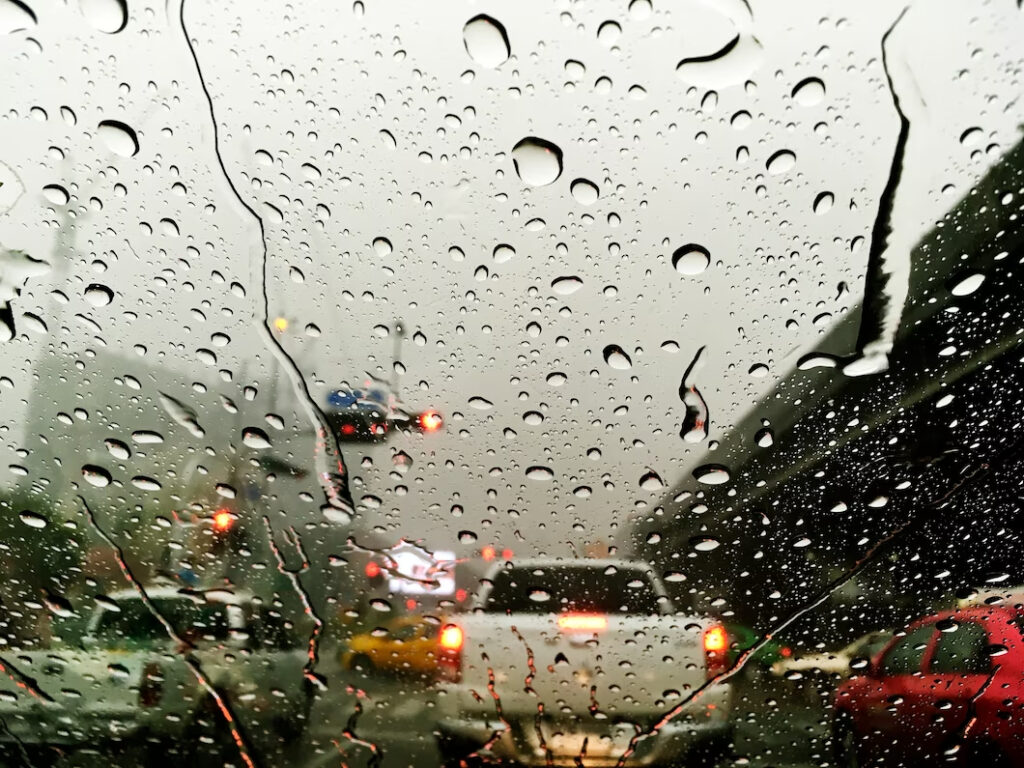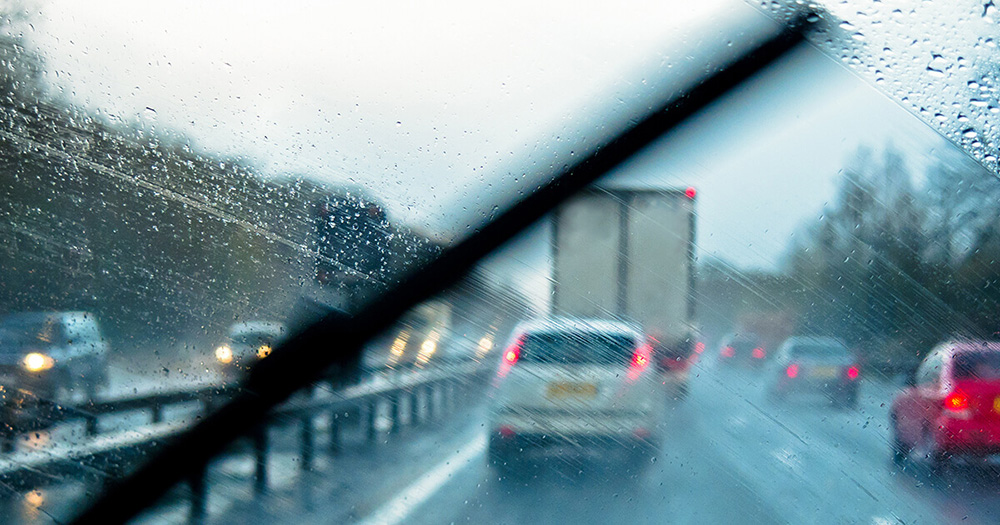Driving in the rain poses unique challenges, even for the most seasoned drivers. The slick roads, reduced visibility, and the potential for hydroplaning demand a cautious approach to ensure your safety. This article will look at crucial tips and strategies for safe rainy-day driving. Whether you’re a novice or an experienced driver, these insights will equip you to navigate wet roads while minimizing risks confidently. Let’s embark on this journey to master the art of safe rainy-day driving!
Tips for Driving in the Rain
1. Delay Your Trip if Possible
If you’re uncomfortable driving in the rain and your journey can be postponed, it’s wise to wait until weather conditions improve. There’s no need to put yourself in harm’s way when driving in wet conditions isn’t essential.
2. Verify Your Vehicle’s Equipment
Before encountering rainy weather, ensure all your vehicle’s equipment is in working order. Check your headlights, tail lights, and windshield wipers to guarantee they function efficiently when needed. Don’t forget to inspect your tires’ tread depth, as balding tires can significantly reduce traction on wet roads.

3. Reduce Your Speed
In wet weather, adhering to the posted speed limit and driving considerably slower than usual is imperative. Wet roads are treacherous, and your vehicle’s reaction time is notably slower when it’s raining. Slower driving is crucial for your safety.
4. Activate Your Headlights
Many states mandate drivers to turn on their vehicle’s lights when driving in the rain. Even in light mist or drizzle, turning on your vehicle’s headlights enhances your visibility and other drivers’ ability to spot your vehicle on the road.

5. Utilize Your Windshield Wipers
While it may seem obvious, some individuals forget to activate their windshield wipers in light rain. Most cars allow adjustable wiper speeds to clear moisture effectively, whether a light mist or a heavy downpour. Additionally, various products are available to repel rainwater from your windshield.
6. Maintain a Safe Following Distance
Increase the gap between your vehicle and the one in front of you. Rainy conditions make it more challenging to stop your vehicle quickly. Aim to keep several car lengths between your car and other vehicles for safe braking.
7. Avoid Heavy Braking
When preparing to slow down or stop, reduce your vehicle’s speed by lifting off the accelerator earlier than usual. Avoid using cruise control so that you can pay full attention to managing both the gas and brakes.
8. Beware of Standing Water
Just six inches of water on the road can lead to losing control. Hydroplaning occurs when tires lose traction and skid across the road’s surface. To prevent hydroplaning, steer clear of areas with collected water by changing lanes or safely navigating around them.

9. Ease Off the Gas When Hydroplaning
Hydroplaning is common during rainy weather and can lead to accidents due to loss of control. If your car hydroplanes, calmly release the accelerator and steer in the direction the front of your car needs to go. Avoid abrupt turns or slamming on your brakes.
10. Ventilate Your Car
Rain increases humidity levels, which can cause your vehicle’s windows to fog up while driving. Most vehicles have ventilation systems designed to combat this issue. If visibility becomes compromised, pull over until your windows are clear.
The Significance of Safe Rainy-Day Driving
Safe driving in the rain is paramount for the safety of all road users, including drivers, passengers, and pedestrians. Rainy conditions often lead to reduced visibility and slippery roads, significantly elevating the risk of accidents. Understanding the statistics, importance, and precautions associated with driving in the rain can contribute to safer roads.
According to statistics, nearly 21% of annual vehicle crashes are weather-related, with the majority occurring on wet pavement (around 70%) and during rainfall (46%). These statistics underscore the increased accident risk of rain, emphasizing the need for heightened caution in such conditions. Moreover, wet-weather accidents result in thousands of injuries and fatalities each year, underscoring the severity of the issue.

In Conclusion
Rainy-day driving demands extra attention and precaution. Maintaining a safe driving speed, increasing the following distance, and ensuring your vehicle is equipped with suitable tires for wet conditions are essential. Regular vehicle maintenance, including replacing worn-out wipers and inspecting your brakes, further enhances safety during rainy weather. Stay focused, avoid sudden manoeuvres, and be vigilant of fellow drivers facing challenging weather conditions. By following these tips, you can confidently and safely navigate rainy weather. Stay safe out there!
FAQs
How Can I Be Comfortable Driving In The Rain?
- Slow down and be more cautious.
- Turn on your headlights and wipers.
- Keep a safe distance from other vehicles.
- Avoid sudden braking or sharp turns.
- Maintain proper tire pressure and tread depth.
- Stay focused and alert.
- If you’re feeling uncomfortable or nervous, take breaks when necessary.
What Are The Safety Tips During Heavy Rain?
- To stay safe during heavy rain, follow these tips:
- Reduce your speed.
- Use your headlights and wipers.
- Keep a safe following distance.
- Avoid flooded areas.
- Stay alert for road hazards and debris.
- Avoid using cruise control.
- If visibility is too low, find a safe place to pull over and wait for conditions to improve.
When Should You Be Most Careful Driving In Rain?
- At the beginning of the rain, accumulated oils on the road can make it slippery.
- During heavy downpours, visibility and road grip are significantly reduced.
- In areas prone to flooding or flash floods.
- When driving through standing water or puddles.
- In high-traffic areas or when approaching intersections.
What Should You Do On Wet Roads?
Slow down to maintain control of your vehicle.
- Turn on your headlights to improve visibility.
- Use your windshield wipers to clear water from your view.
- Keep a safe following distance from other vehicles.
- Avoid hard braking and sudden turns.
- Drive in the vehicle’s tracks ahead of you, as they may have cleared some water from the road.
- Watch for standing water or puddles, which can cause hydroplaning.


Discussion about this post